Two of the key concepts that the examiners want to see you demonstrating understanding of are change and 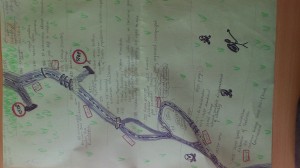 continuity. This particularly comes in to the turning point in government style of questions, where you must show understanding of the distinciton between a ‘change’ and a ‘turning point’. One analogy I have used in my lessons is to compare events to a road. A change would be the road changing from 30 to 60 mph when the pace of something changes. A turning point would be a T-junction or roundabout where there is a distinct change in direction.
continuity. This particularly comes in to the turning point in government style of questions, where you must show understanding of the distinciton between a ‘change’ and a ‘turning point’. One analogy I have used in my lessons is to compare events to a road. A change would be the road changing from 30 to 60 mph when the pace of something changes. A turning point would be a T-junction or roundabout where there is a distinct change in direction.
My year 13s have used this as the basis to create road maps of the course we have studied. They are going to comment on this to explain the thinking behind their road maps and how they have selected and conveyed events we have studied. For example, one of the group reflected the introduction of redemption payments after the Emancipation with a toll road.
Other classes, please feel free to comment with your own ideas on how to reflect events or periods. You could even create your own and send us a picture of it!
Hopefully a useful revision activity as well!

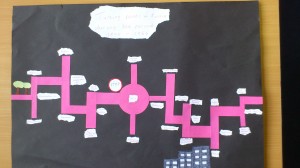
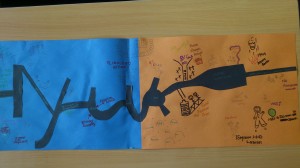
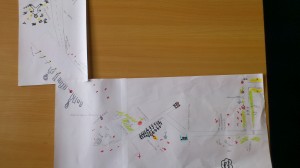
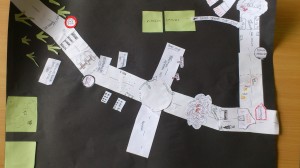
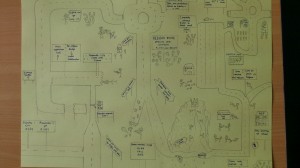
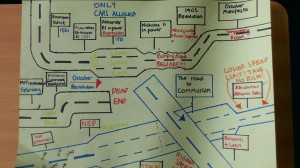


Although my road map isn’t visible on this page, I took a fairly similar stance on creating the road maps as every one else, although I don’t think mine was as imaginative! I simply had a one way road from 1855 onwards, which showed the directions which Russian government took throughout this period of history. At times when the nature of government changed, the road led off in a slightly altered direction, representing the idea that this can mean a temporary measure or continuation of a certain policy – left was towards liberal sympathies/relaxation of autocracy and right was conservatism/strong autocratic leadership (the road mainly went right…). For instance, in 1881 there was a possibility for Alexander III to continue with his father’s desires for a constitution (and continue left), but he chose the repressive route so the other was closed off with a ‘stop’ sign and the road veered off right. The continuation here is that Tsarist autocracy itself was continued, so its not so much a turning point, although some may argue that it was. Therefore, at turning points (such as 1917) the road reversed around and led off in a completely different direction to represent a more permanent change. In the case of 1917, after the fall of the Provisional Government and the rise of the Bolsheviks, the road went farther right than before (which was even more prominent under Stalin). This was to show the higher levels of repression and authoritarianism seen under these leaders which were on a much larger scale than experienced under the Tsars. The road then veered slightly left again from 1953 onwards, to show Khrushchev’s relaxation of Stalin’s totalitarianism. However it still retained its new far-right direction as Khrushchev kept some principles of his two predecessors, such as the secret police.
My road map started with a sharp bend at the start due to the Emancipation Edict and how that could have potentially changed Russia, especially in the terms of modernisation and industrialisation for the future. The ‘Only Cars allowed’ sign under the reign of Alexander III is meant to reflect the highly repressive nature under him and how he wanted Russia occupied mainly by Russian people, dismissing anyone of foreign nature. This can be seen the most with his treatment of the Jews, not allowing them to buy property, denying them the right to vote in local government elections and no entry to either medical or military professions. The road then becomes very bumpy to signify the rather disastrous reign of Nicholas II because of poor leadership in the Russo-Japanese War and World War One, among other reasons. You then see a slight bend during the 1905 revolution as it almost overthrew Tsarism but the October Manifesto kept the road back in the direction of Tsarist autocracy, but still not fully in line. After the March 1917 revolution, there is a slight change of direction with the Provisional Government but the October Revolution brings the road to a complete dead end as Tsarism was overthrown. On a completely different road, Communism then begins under Lenin. The dead figures on the road symbolises the disastrous effect War Communism had on the people because of the famine in 1921. However, the NEP see’s a wider road for Russia, to show much more industrial improvement and to water away the effects of WC. This same road is continued under Stalin through his policy of Collectivisation and the Five-Year Plans. Although, when Stalin dies Khrushchev takes over, which shows a narrower road and lower speed limit due his less repressive-nature and De-Stalinisation Speech in 1956 which ended the Cult of Personality idea under Stalin.